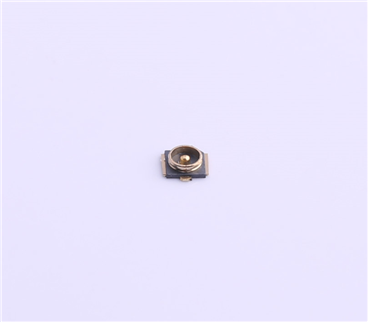It is an indisputable fact that American machine tools are backward. In this regard, as early as 1993, Rand think tank had issued a warning of "the decline and revitalization of American machine tools". However, in the following three decades, with the expansion of globalization, American manufacturing was outsourced greatly. As an industrial machine tool, machine tools naturally declined.
Figure 1 recovery of the decline: the cry 30 years ago
In recent years, made in America hopes to regain its victory. Machine tools have also received greater attention. The U.S. Department of defense evaluated 16 industries in the industrial capacity assessment report for fiscal year 2020 launched in January. As a key cross industry, the development strategy of machine tools has been included in the scope of discussion for three consecutive years.
Figure 2 DOD fy2020 industrial capability assessment report, January 2021
Can't go back to the peak era
The peak time of American machine tool industry was around the 1980s. What is meaningful is that in 1971, the United States, which grew strong through manufacturing, began to have a trade deficit for the first time. The crack is not big, but it has become a watershed made in the United States. Machine tool is often called industrial machine tool, which is the source of most machinery manufacturing; In fact, the machine tool has another function, that is, the thermometer of the manufacturing industry. It is a duck crossing the spring water of the river. It can most sensitively sense the changes around it. Ten years after the trade deficit, the original insignificant signal has become a powerful horn. The output value of machine tools in the United States began to decline sharply, while Japan and Germany made rapid progress. As a powerful machine tool country, Italy also stumbled and basically guarded its own rivers and mountains.
Figure 3 output value of four machine tool powers
(source: Rand report, 1993)
Rand think tank's warning occurred at this time. The 1993 report gave painstaking suggestions. However, the talk of think tanks is not worth the Scud of entrepreneurs. American manufacturers have quickly spread their production bases all over the world, and have thus obtained rich returns. The local manufacturing in the United States has declined, and the machine tool industry has become lifeless.
China machine tool: an irreducible crater
Ten years ago, China's machine tools had a glorious day. In 2012, the world's first and second machine tool manufacturers were all Chinese machine tools. Taking the merger and acquisition of German machine tool enterprises as the strategy of China's machine tool internationalization is also popular. At that time, people probably thought that the overall situation of the world had been decided.
However, machine tool has always been a wonderful industry, which does not follow common sense, especially in China. Later, the development of events proved one thing: the global machine tool industry has become a mature market, but China is far from it. Although almost from the beginning of the 21st century (the second year after China's accession to the WTO, China's machine tool output value reached nearly 6 billion US dollars, ranking first), China has always been the largest machine tool producer and consumer. However, China's machine tool industry has always been in a volatile crater. Over the past two decades, China's machine tool industry has not found a way to calm down. After the reorganization of Shenyang Machinery in 2020, China General Technology Group has just been able to calm down and plan the future machine tool combination. People can imagine that the road to the revitalization of China's machine tools may have just begun.
Figure 4 distribution of output value
(source: DoD's industrial capacity assessment report for fiscal year 2020)
From the output value, the total output value of mainland China and Taiwan in Chinese mainland in 2019 was 24 billion US dollars, almost four times that of the United States. Germany, Japan and Italy followed. These three countries have basically maintained the pattern of 40 years ago.
Nevertheless, the United States still maintains a strong consumption capacity of machine tools. With a consumption capacity of US $10 billion, ranking second only to China's US $22 billion. But the gap between the two is decreasing. According to the 2019 industrial capacity assessment report published by the U.S. Department of defense last year, in 2018, China's machine tool consumption output value is close to $30 billion, compared with $8.5 billion in the United States. At that time, the gap reached 3.5 times. The increasing consumption of machine tools in the United States shows that the American manufacturing industry is still a very attractive market for machine tool products. However, it can no longer be satisfied by American machine tool manufacturers.
Figure 5 distribution of output value
(source: U.S. Department of Defense's industrial capacity assessment report for fiscal year 2020
Machine tool is a thorny industry, which is most dissatisfied with management
Machine tool is an industrial machine tool, but it is also a thorny industry. It is most dissatisfied with government management. Neither economic nor administrative means seem to work for it. It seems to follow only the principle of engineers.
There is no industry like machine tool. The world's largest and second largest economies are both trade deficits. The evaluation report of the U.S. Department of defense is very emotional. In terms of machine tools, the United States is the worst performing country, with a trade deficit of $3.8 billion. Among the top 20 machine tool manufacturers in the world, only Gleason machine tools and Haas machine tools guaranteed by the military are left in the United States. China's trade deficit also reached US $2.5 billion - considering that China is the world's largest machine tool consumer - reaching US $22 billion. This deficit of nearly 11% is really extraordinary. Chinese machine tools really need a breakthrough. In contrast, Japan and Germany have machine tool trade surpluses of US $7 billion and US $6 billion respectively.
Figure 6 machine tool trade surplus and deficit
In recent years, Mexico, India and Vietnam, which have caused trade wars, are also deficit countries. Russia's manufacturing industry has shrunk sharply in recent years, but the machine tool deficit remains the same. It shows that the manufacturing in these countries depends on foreign machine tools. However, if we look at those powerful industrial countries, such as Canada and France, machine tools also import more and export less, which is also a deficit. It seems that machine tools are really a wonderful industry, unlike any other industry.
Machine tool is a highly emotional industry, with a strong periodicity. Many machine tool enterprises stumbled at the bottom of the valley. The heart of any country's industrial health is the machine tool. Only with the strong and accurate support of the state can we maintain this powerful heart. At the forefront of the trade surplus, including Japan, Germany, South Korea, Italy and Spain, the government has played a great role in the past development stage. Americans now seem to agree with this, even suggesting that they envy the investment support plans of China and the EU.
It is noteworthy that the development of the machine tool industry is not guaranteed by the wage dividend of the labor force. Many countries with positive trade balance, such as Japan, Germany, Italy, Switzerland, South Korea, Spain and Austria, are hardly low wage markets. This shows that the development of machine tools is not sensitive to labor costs. It is not a labor-intensive industry. Low wage human capital structure will worsen the development of machine tools.
American machine tools are also deeply poisoned by SCI
The core of industrial health in any country is its machine tool industry. The decline of machine tool industry is accompanied by the decline of domestic manufacturing industry.
What makes the US Department of defense anxious is that the machine tool itself is the basis of robots, automation and precision parts, not only industry, but also arms dealers are direct stakeholders. However, among the world's 21 largest machine tool manufacturers, the United States now accounts for only two - Gleason and Haas Automation. In contrast, Japan has eight and Germany has six. From this point of view, it seems that the United States is not very wary of Chinese machine tools. The US Department of defense believes that China designs, manufactures and sells a large number of relatively low-cost machine tools for the world, and imports high-end machine tools from more advanced regions (especially Japan, Europe and the United States). However, the Ministry of national defense has never given up the opportunity to publicize the threat of China's machine tools. In last year's report, it accused China of intellectual property rights, dumping and other issues in a very general manner.
As the largest trade deficit country, why does the United States rely so much on foreign countries in the field of high-precision machine tools. Why is the development of American machine tools disadvantageous?
An important reason is the depletion of university resources. Machine tool research is time-consuming and labor-consuming, but the results are not displayed. Publications on machine tool related technologies are basically journals with relatively low impact factors. Without the traction of SCI factor of scientific citation index, many university leaders also regard the machine tool industry as "old technology" and prefer to focus resources on "new fields". The United States has always been a model of pipeline innovation. Without the innovation fire of upstream universities and research institutes, the manufacturing innovation behind will be in a mess. The failure of American machine tools is such an obvious case.
In addition, the shortage of manufacturing resources and materials and the shortage of human resources are the reasons why it is difficult for American machine tools to produce competitiveness. American parents and college students prefer the one size fits all four-year system (whether it is needed or not). The result of this education also makes students choose to stay away from the machine tool manufacturing industry.
This talent situation is really the same as that faced by made in China.
COVID-19 has led to tens of thousands of small companies in the US, and the US machine tool industry and the Department of defense are very dependent on them. The reduction of small companies will enable large companies to further generate more offshore outsourcing. The report believes that such an enterprise strategy will deviate from national interests.
America's struggle
The evaluation report of the U.S. Department of defense is available every year. Last year's report emphasized the importance of the link between the ability to conceive, design, develop and manufacture advanced machine tools and national self-determination. The 2020 COVID-19 pandemic has made this lesson even more profound. Due to the lack of rapid access to tools for the production of personal protective equipment and drugs, American workers are unable to continue to work, which not only endangers the medical situation, but also damages the economy in all fields.
Therefore, in industries that have been downsized in the United States, the Department of defense believes that it is necessary to establish a rapid manufacturing capability recovery mechanism or develop new flexible manufacturing capabilities to achieve rapid recovery when there is demand.
In March last year, the International Association of commercial banks and the Oak Ridge National Laboratory under the Department of energy jointly launched the "American cutting edge" ace, which is a nationwide machine tool center network. It mainly solves three strategic research directions, including improving the efficiency of machine tools, realizing the hybrid manufacturing of adding materials and cutting, and establishing a new control system for large parts. The Composites Research Institute, one of the 14 manufacturing innovation networks in the United States, will work closely with ACE. Implement a new training model, completely surpassing the current CAD / CAM.
It should be said that these repairs have no obvious effect on the development of American machine tool industry. American machine tools have their own pace of development. There are three outstanding students in American machine tools. One is Gleason gear machine tool, the darling of the Ministry of defense, which has become the king of surface machining by relying on mathematicians; One is Haas Automation, which is very rare in the American machine tool industry and can survive with economical machine tools; One is the quiet hating machine tool. In the past 25 years, through the acquisition of precision grinder corps with eight grinding brands, it has occupied 80% of the market share in the small and medium-sized ultra precision machining market in Europe and America. Others are very small machine tools, such as shanneng honing machine, ferro water knife, etc. There are also some exclusive weapons that can serve us national defense and space exploration. For example, the next generation of giant optical infrared Observatory under construction in the United States will be put into use in Chile in 2027, which is believed to change the history of overlooking space. The support of the giant Magellan Telescope used there is very important. As the heart and soul of the telescope, the support weighs 18000 tons. Only the heavy milling of American Ingersoll machine tool can be competent. At the end of March, Ingersoll just broke ground to build a factory in Illinois. This vertical gantry mill will be the largest machine tool in the state. Of course, Ingersoll is no longer "American". It was acquired by an Italian compressor group as early as the trough of machine tools at the beginning of the century.
American machine tools are also trying another direction, that is to combine with the processing of emerging industries. Such as semiconductor equipment and medical equipment. Pan Lin Lam, the second largest semiconductor equipment manufacturer in the United States, has acquired a grinder in Germany. The combination of semiconductor equipment and machine tools is worth pondering. This is an opportunity for American machine tools. In terms of the precision development of medical devices, it also brings eager expectations to American machine tools.
Summary: the mystery of machine tools
With the improvement of industrial automation and digitization, there are greater and higher demands for the reliability, accuracy and production time of machine tools. CNC machine tools obviously have a better development space.
However, after reading the evaluation report of the U.S. Department of defense, one feeling is that the United States is helpless for the development of machine tools. In terms of supporting policies, it still has not found an appropriate method. As the heart of industry, machine tool has never been an industry growing up alone. It can only develop by supporting each other in multiple industries. However, the United States has lacked a sound innovation ecosystem and can not guarantee that machine tools need a mixed growth environment that can eat hundreds of meals and wear hundreds of clothes.
Why are machine tools not developing well in the United States? This is also related to the attributes of strategic investment products of machine tools. The machine tool itself is a highly layered and inclusive concept, and the properties of low-end and high-end products vary greatly - just as the concept of "Earth" makes people ignore the temperature difference between the equator and the Arctic. Low end machine tools are standard chemicals, while high-end machine tools are exquisite works of art with high price and few quantity. Their starting points are completely different. The financiers on Wall Street can neither see the poor profit margin of low-end machine tools nor the poor sales of high-end machine tools. Therefore, machine tools have become an industry that must be abandoned in the United States. This also leaves an important enlightenment for the development of China's machine tool industry: high-end machine tools are strategic materials in China. Don't stare at how much money they earn every day like fussy vegetable farmers. The development law of high-end machine tools runs counter to GDP thinking. It has neither quantity nor guarantee sustained growth. The best way for pursuers to treat it is from the perspective of national interests and security strategy, not just from profit. At that time, Samsung and LG could seize the dominant power in the hands of the arrogant Japanese LCD panel manufacturers and completely squeeze Japan out of the market, relying not on the concept of cost and profit, but on the concept of investment strategy facing the future. The so-called "liquid crystal countercyclical" investment is not entirely the work of entrepreneurs. It is not so much the pattern and courage of an enterprise as the strategic determination of a country. This is the price that the laggards must pay for the future. The doorway of machine tools -- far view is machinery, near view is technology, and close view is mathematics. Taking gear machine tools as an example, only by integrating the gear meshing principle of machinery with differential geometry, which is the world of mathematicians such as Qiu Chengtong of Nankai University, can we achieve a world. To create strange steel teeth and copper teeth of various gears requires materials, cutting tools, machine components, and finally depends on mathematician's equations. The development law of the industrial chain behind this is difficult to be observed by ordinary managers or technical laymen. Without the paranoia of technology and the "awe" of machine tools, high-end machine tools are unlikely to develop. In China, whether it is the layout of Qinchuan gear machine in the past, or the CNC system and laser of Shenyang machine, if they can't tolerate huge losses for several years, can't see the huge value brought by long-term technical reserves, but replace them with a small abacus of profit first, then it is difficult for high-end machine tools to win. The machine tool industry can only have some more warm and shiny Jasper. This is the sadness of the development of high-end machine tools. In the long road of backward pursuers, there is no high-end machine tool without technical gamblers. China's private enterprises have developed in high-end machine tools in recent years. For some reason, it tolerates the adventurous spirit of technology gambling.
On the other side of the ocean, it is difficult for American machine tools to return to their former height. Although it is still a top-level product that highly depends on mechanical accuracy and electronic control software, deeply depends on technology, and the bottom layer depends on mathematics, American mathematicians and manufacturing factories have neither interest nor effort to support it. There, it is the collapse of the whole ecology, not the loss of the machine tool industry.
American machine tools, can't go back.
This article comes from the author“Lin Xueping”, please contact us if you have any questions about infringementSupport the protection of intellectual property rights. Please indicate the original source and author for reprint.















